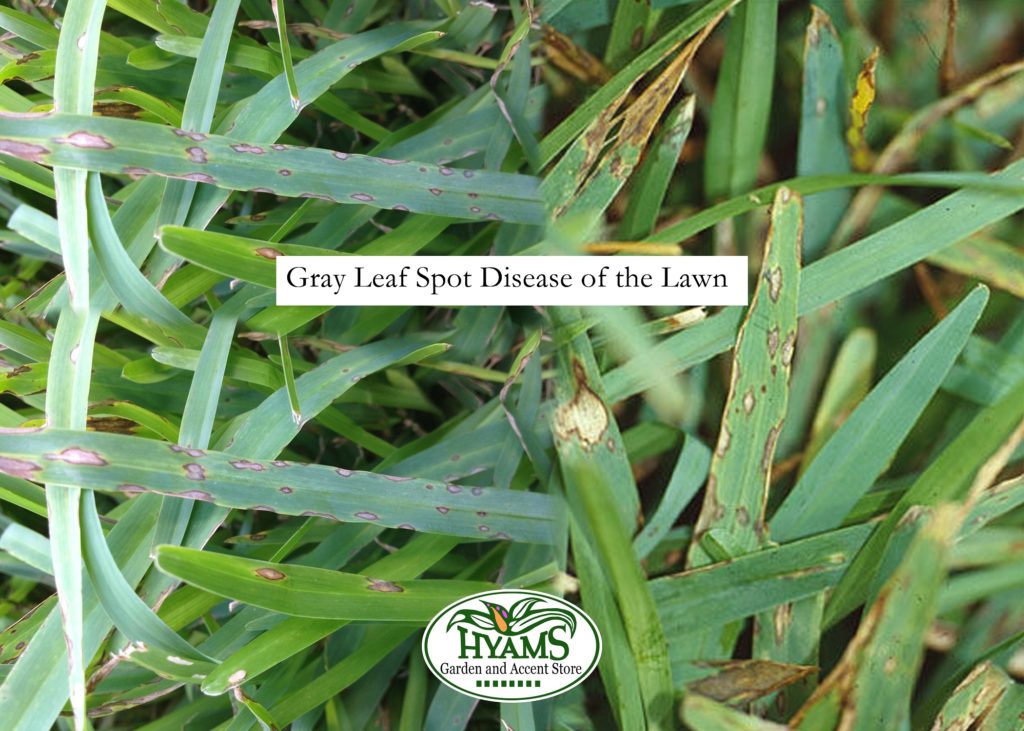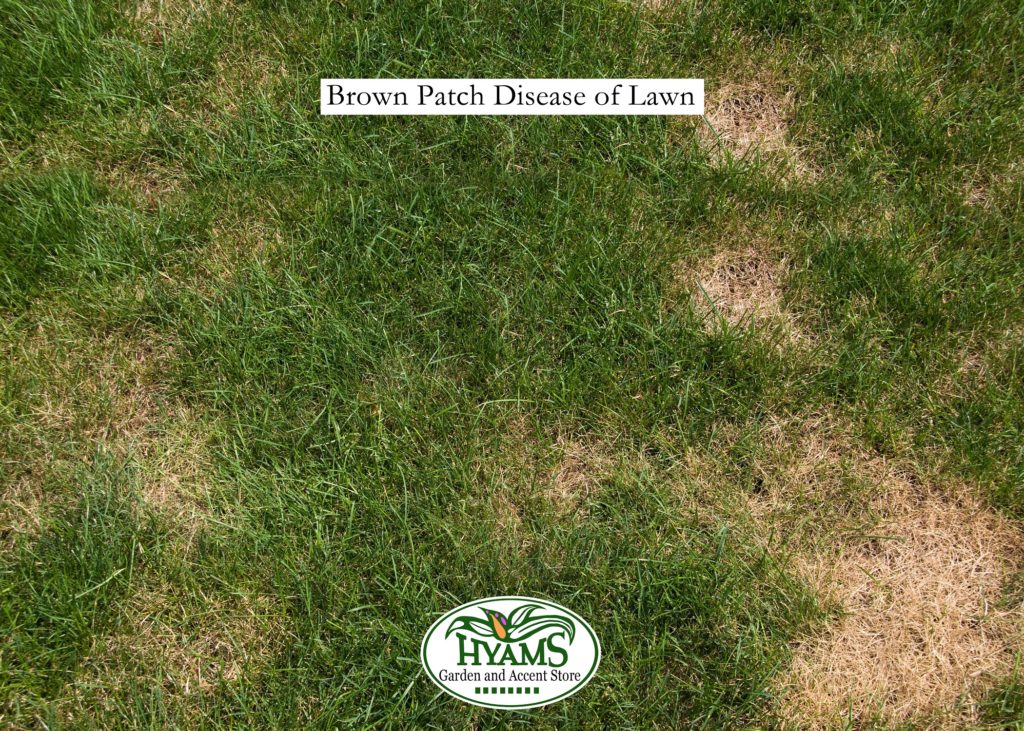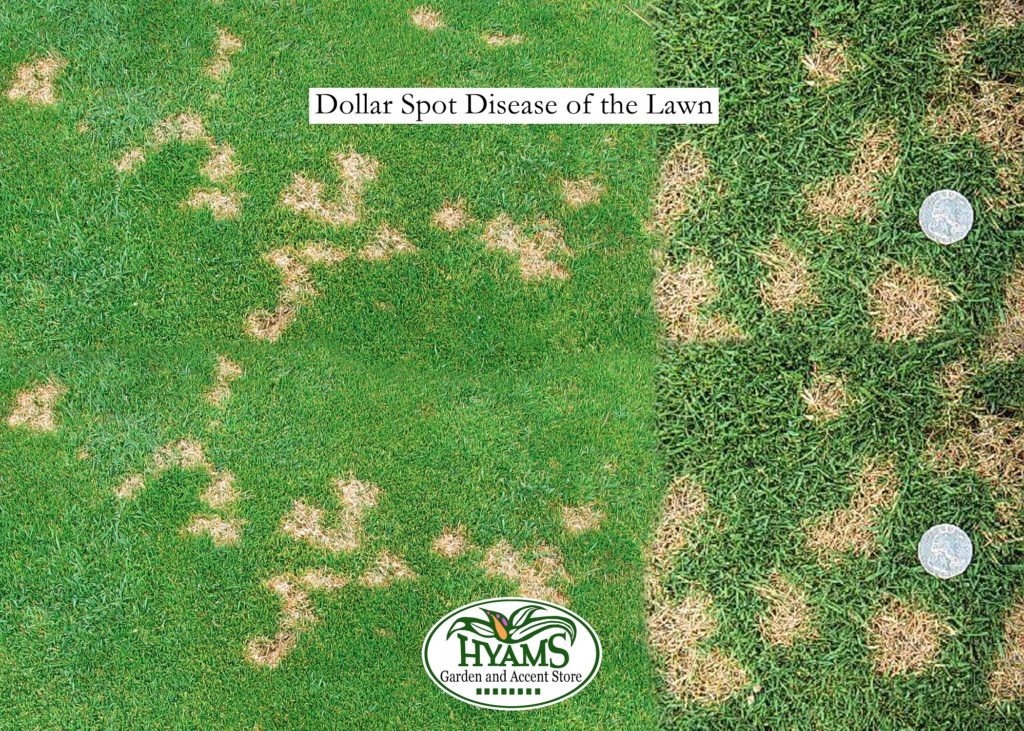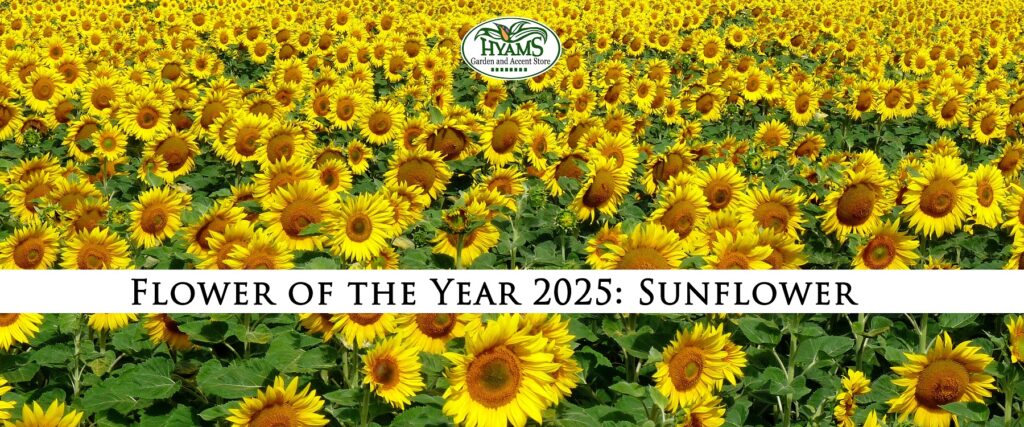Hey everyone, I hope you’re having a great Spring! If you haven’t fertilized yet, the time is here. It looks like everyone’s grass has greened up enough to tolerate an application of Ferti-lome 15-0-15 Centipede Lawn Fertilizer or something similar. It is a good formulation to ease all warm season grasses into fully greening up including St. Augustine, Zoyzia and Bermuda. Please hold off using any “weed and feed” products as the herbicide component could burn the new grass shoots. A strong healthy grass will choke out many of the weeds you may have now. If needed you could apply a weed and feed after the grass is fully greened up, and we have those on hand. We will have pre-emergents later in the month to apply around Memorial Day to prevent the dreaded Chamberbitter and Virginia Buttonweed. Selective herbicides like Image Kills Nutsedge can be applied after your grass is fully greened to control other problematic weeds. I have had several folks come in with some fungal issues and we have Scotts DiseaseEX on hand as well as a couple of other products. I hope these suggestions help you have a lawn you can be proud of! (Randy Howie)
Diagnostic Center
February Lawn Tasks
__Get soil tests to prepare for Spring lime and fertilizer applications. 2cups of soil from each area in question or a random combined sample can be taken to Clemson Ag Extension office at 259 Meeting St, the second floor of the Senior Citizens Center, Mon-Fri 8:00-4:00. $6.00 per sample. More information available at www.clemson.edu/extension/hgic.
__Calculate yard square footage of each area for how much lime/fertilizer/herbicide/insecticide you may need. Help with this can be found in our store or on the website for Clemson Cooperative Extension Home and Garden Information Center www.clemson.edu/extension/hgic.
__Plan your pre-emergent herbicide applications for 3rd or 4th week of this month. Scotts WeedEx (pendimethalin) should be applied at this time to well established lawns to prevent crabgrass, spurge, oxalis and other listed weeds. One 10 lb. bag treats 5000 sq ft. It should be applied to dry grass with a broadcast (we lend these) or drop spreader and watered in with approximately ¼ inch water. Remember not to overseed treated areas because pendamethalin prevents seed germination. Also do not rake or otherwise disturb soil bed as this would break the chemical barrier in the soil. Do not re-apply pendamethalin for at least 8 weeks. As always, be sure to read the label carefully and follow all directions. For extended crabgrass and broadleaf control, an application of Hi-Yield Turf & Ornamental Weed & Grass Stopper with Dimension may be applied 4-6 weeks later. Wait until at least mid March to start any fertilizer programs.
__Now is the time to prune most deciduous trees and shrubs. Crape myrtles, Chinese elms, Japanese maples, red maples and oaks could all benefit from a thoughtfully planned prune this month. Remove crossing and thin branches to allow for more light and air flow. Wait on spring flowering trees like purple leaf plums, cherries, redbuds and tulip (Japanese) magnolias until after they bloom. Summer flowering shrubs like roses, callicarpa, hibiscus and most grasses can be pruned this month. Some evergreens like ligustrum and hollies can be pruned between now and the first of April. Leave Spring flowering shrubs like azalea, spiraea, indian hawthorn and gardenias until after they have flowered. Wait until April to prune camellia, then fertilize them along with gardenia, azaleas and hollies with Holly-Tone. Do not hesitate to call Randy at 843-795-4570 in the store or e-mail at rhowie@hyamsgardencenter.com if you have questions.
Diseases of the Lawn
Now is a good time to get the jump on lawn diseases. Besides applying fungicides there are several cultural practices that can help prevent them. Three most common diseases that affect the lawns are: gray leaf spot, brown patch and dollar spot. The beauty of a lawn can be quickly destroyed by these fungal diseases.
Gray Leaf Spot on St. Augustine grass

Gray leaf spot is a fungal disease that occurs most commonly on St. Augustine grass. The initial leaf spots are small and brown, but they expand rapidly into large, oval or elongate, tan to gray leaf spots, which are surrounded by purple or brown borders. A yellow halo may surround some of the spots, or a general leaf yellowing may occur.
During warm, humid weather the fungus produces a grayish mycelium (cottony fungal growth) and numerous spores on dying foliage, which gives a grayish appearance to the spots. Blades of grass will wither and die if leaf spots are numerous. Under favorable conditions for disease development, large areas of turf may appear to be scorched, resembling extreme drought stress.
Gray leaf spot is favored when temperatures are between 77 and 86 °F during the day and above 65 °F at night, and is most severe during rainy, humid periods. The fungus survives dry summer conditions as fungal mycelium and spores on dead foliage and in the thatch layer. When favorable conditions of moisture and high humidity return during the summer, the fungus produces an abundance of spores that are spread by wind, splashing rainfall or irrigation, and the movement of lawn equipment on wet grass.
How to Manage Gray Leaf Spot Disease of the Lawn?
- Reduce thatch layer.
- Irrigate deeply, but infrequently. This generally means one time per week with one inch of water. Always irrigate in the morning, which promotes quick drying of the foliage.
- Avoid using post-emergent weed killers on the lawn while the disease is active.
- Avoid medium to high nitrogen fertilizer levels.
- Improve air circulation and light level on lawn. Limb up over-hanging trees and prune back nearby shrubs.
- Mow at the proper height and only mow when the grass is dry. Bag and dispose of grass clippings if disease is present.
- Control chinch bug infestations.
- Use fungicide treatments as needed along with proper turf grass culture.
Brown Patch and Large Patch Diseases of Lawns

Brown patch and large patch are serious fungal diseases (each caused by different strains of Rhizoctonia solani) that can affect all South Carolina lawn grasses. Disease can develop rapidly when daytime temperatures are warm (75 to 90 °F) and humid, nighttime temperatures are above 60 ºF, and there is an extended period of leaf wetness. Generally, symptoms of brown patch begin on cool-season grasses (tall fescue, ryegrass, bluegrass and bent grass) during the late spring. It may also occur on these grasses during warmer periods of the winter months. Warm-season grasses (St. Augustine grass, zoysia grass, Bermuda grass and centipede grass) most commonly are affected by large patch (formerly also known as brown patch) during the early spring and late fall.
Symptoms of brown and large patch diseases may vary greatly with the type of grass and soil conditions. The diseases usually cause thinned patches of light brown grass that are roughly circular in shape. These areas range in diameter from a few inches to several feet. Often the center of the patch will recover, resulting in a doughnut-shaped pattern.
When disease conditions are favorable, large areas of the lawn may be uniformly thinned and eventually killed with no circular patch being evident. This type of pattern is commonly seen on infected St. Augustine grass grown in shady, moist locations.
All types of warm-season or cool-season lawn grasses grown in South Carolina can be affected by large patch or brown patch, respectively.
Prevention & Treatment of Brown Path Disease of the Lawn
The best way to prevent brown patch or large patch in the home lawn is by following good lawn care practices. This is much easier and less expensive than the use of fungicides and can be very effective.
- Avoid high rates of nitrogen fertilizer on cool-season grasses in the late spring and summer. Avoid high nitrogen rates on warm-season grasses in mid to late fall or in early spring. The disease-causing fungus readily attacks the lush growth of grass which nitrogen promotes. Avoid fast-release forms of nitrogen fertilizer.
- Irrigate grass only when needed and to a depth of 4 to 6 inches (generally 1 inch of irrigation water per week), but do not subject the lawn to drought conditions. Water early in the morning. This disease can spread fast when free moisture is present, especially greater than 10 hours.
- Avoid spreading the disease to other areas. Remove clippings if the weather is warm and moist to prevent spread to other areas during mowing.
- Keep lawns mowed on a regular basis to the proper height for the grass species you are growing. Lower than optimum mowing height can increase disease severity. Do not mow fescue lawns shorter than 2½ inches high, nor higher than 3½ inches. Mow centipede at 1½ inches high.
- Provide good drainage for both surface and subsurface areas. Correct soil compaction by core aeration. Prevent excessive thatch buildup.
- Have the soil tested and apply lime according to test recommendations. Disease may be more severe if the soil pH is less than 6.0. Keep potassium (K) level at upper end of sufficient rating on soil test.
Fungicides can be difficult to rely upon for controlling brown patch and large patch in the home lawn, but regular applications can vastly improve appearance. A good “rule of thumb” to follow on either cool- or warm-season grasses is to initiate fungicide sprays when nighttime low temperatures reach 60 °F. Stop applications when nighttime lows are forecast to be below 60 °F for five consecutive days. Typically, applications are made at 14- to 28-day intervals, depending upon the fungicide. If disease is severe enough to warrant chemical control, select one of the following fungicides listed in Table 1.
It will help in disease control to alternate fungicides used with subsequent applications to prevent a buildup of resistance to a fungicide. Slightly better control may be obtained by a liquid fungicide application rather than by granular application of the same fungicide active ingredient. Granular fungicides must be irrigated after application (follow label directions).
Dollar Spot Disease of the Lawns

Dollar spot is caused by a fungus. It causes straw-colored spots about the size of a silver dollar (2 to 6 inches diameter) to appear on closely mowed turf. Grass in affected areas may die and the spots may merge to form larger, irregular patches. In coarse textured grass that is cut high, the dead spots are larger and more diffuse. Leaf blades have light tan spots with reddish-brown margins that develop across the leaves. Early in the morning you may be able to see a cobweb-like growth of the fungus over the infected area.
Dollar spot most commonly occurs on Bermuda grass, zoysia grass and centipede grass. Dollar spot is most active from late spring through fall. The fungus develops during humid weather, when daytime temperatures are warm (59 to 86 °F) and nights are fairly cool. These conditions result in heavy dew forming on the grass.
Prevention & Treatment of Dollar Spot Disease:
Adequate fertilization will help the lawn overcome this disease. Prevent thatch buildup and remove excess thatch. Avoid drought stress by watering the lawn deeply, and thoroughly when needed, timing irrigation for early morning. Remove morning dew if possible by mowing or irrigating the lawn. Fungicide applications may be needed during moist weather in the spring and fall, when day temperatures are between 70 to 80 °F. For the home lawn, fungicides that give good control of dollar spot should contain propiconazole, azoxystrobin with propiconazole, or triadimefon. Always apply all chemicals according to directions on the product label.
[For more information go to Clemson Cooperative Extension Home and garden Information Center at http://hgic.clemson.edu/]
